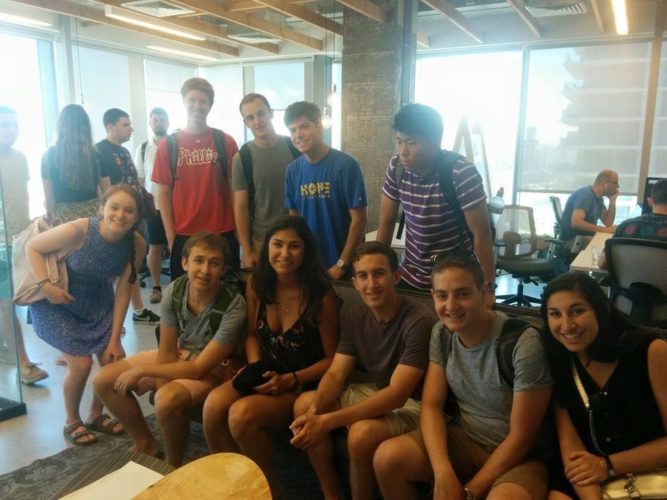Photo, above: Tom and Catherine Holland and their children.
Tom Holland, EMBA ’12, has always been drawn to a life of adventure. As a young man from central Illinois, he participated in Wilderness Adventures, an adventure travel camp headquartered in Jackson Hole, Wyoming, with program offerings all over the world. Founded in 1973, Wilderness Adventures is for students ages 11-20 and seeks to inspire their leadership capabilities while adventuring through the most pristine natural spaces on the planet.
“That month-long summer experience opened my eyes to the person I could be. I was also exposed to the thrill of outdoor adventure,” Tom says. “I found that the experience was a unique way to educate the minds of young adults. I didn’t know it was possible to receive leadership education in wilderness areas.”
Tom’s experience led to him pursue a degree in secondary education from WashU (LA’02), and after graduating, he became a high school teacher. While teaching high school social studies, he continued to spend his summers leading backpacking adventures for kids in Wyoming.
“The mountains became an extension of my classroom—one where I could grow young adults into the best version of themselves. Using the metaphor of wilderness challenge, we deepened our understanding of ourselves,” he says.
Eventually, Tom went on to become the Executive Director of a residential summer camp program in Wyoming. In his new role, Tom decided to return to Washington University, but this time as a member of Olin’s Executive MBA Class 38.
“The EMBA program, much like that summer adventure so many years ago, challenged me in new ways. I found myself learning from both my professors and my peers. Further, they challenged me to dream big when it came to my professional life in the camp and adventure travel business.”
Following his EMBA experience, Tom took on a new job as CEO of the American Camp Association. There, he served as an industry spokesperson and worked with thousands of summer camp programs in the United States to improve the quality and availability of programs to children.
It was during his tenure at the American Camp Association that he was contacted by the owners of Wilderness Adventures, the program he attended as a teenager. They expressed their desire to pass the torch of leadership after 43 years, and wondered if Tom and his wife, Catherine, would be interested in taking the step into business ownership.
“We were thrilled to be approached with this opportunity and to direct such a fantastic company. With over 25,000 alumni, Wilderness Adventures has been a leader in the camp and student adventure travel industry since 1973, and we look forward to continuing that legacy.”
With hundreds of students coming from all over the United States and many international countries too, the program has global reach. And after just over a year at the helm, it is easy to see that Tom is putting to use the skills he acquired at Olin. While remaining true to the core programming of electronics-free youth adventure travel expeditions in national parks and wild areas around the globe, Wilderness Adventures is launching a day camp program for a younger audience in Jackson Hole.

A surfing excursion with Wilderness Adventures
“It is our goal to inspire the next generation to dream big. I was issued that challenge through my experience with Wilderness Adventures all those years ago, and Catherine and I look forward to being stewards of that mission for years to come.”
During the month of March, Wilderness Adventures is offering a $200 program coupon for the children of Olin alumni who wish to enroll in the summer of 2017. To claim your coupon, email info@wildernessadventures.com, with the subject line: OLIN20.
Written by guest blogger KC Friedrich, Senior Associate Director of Development, Olin Business School








